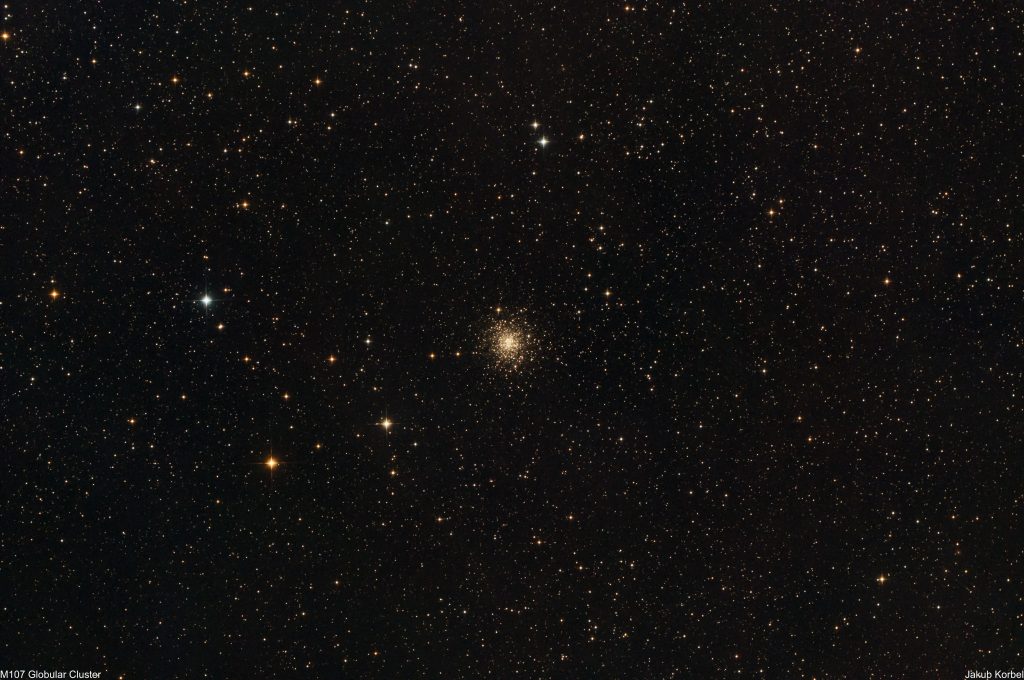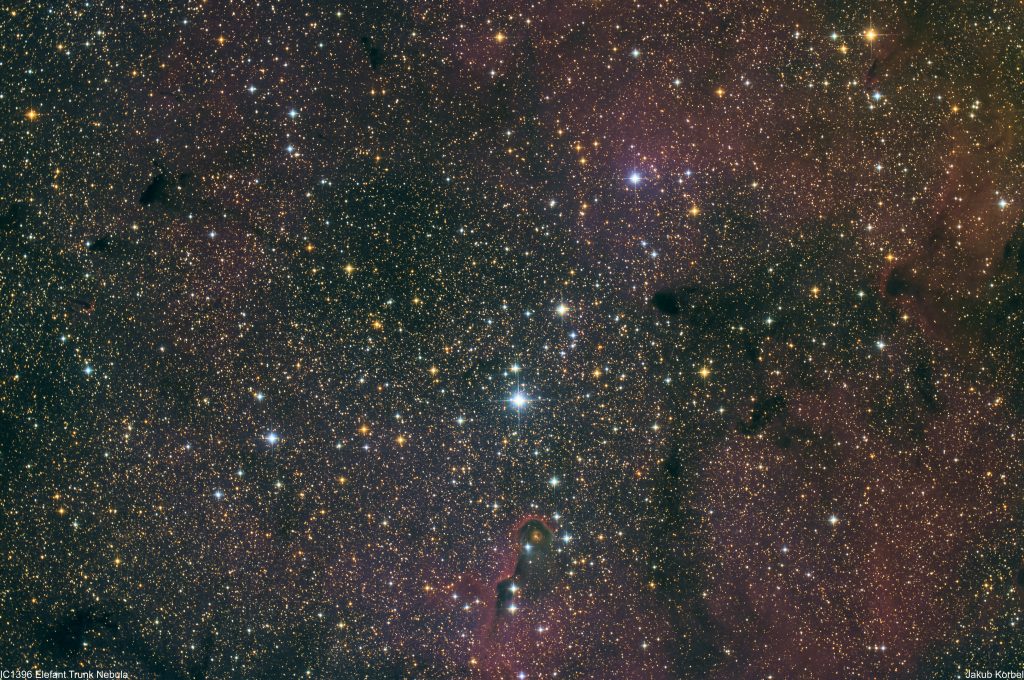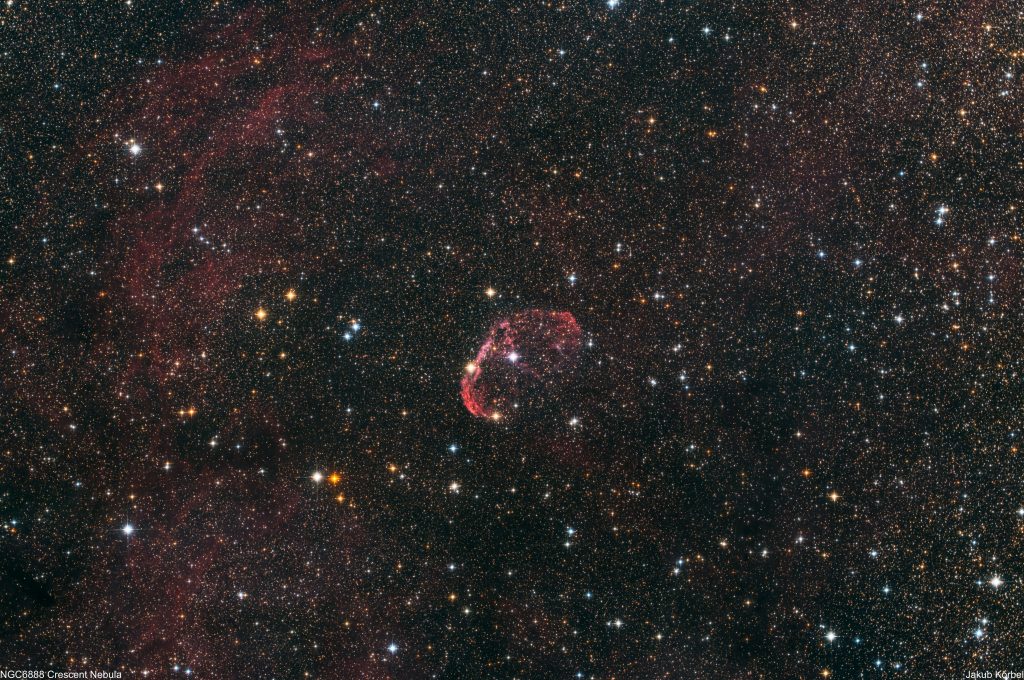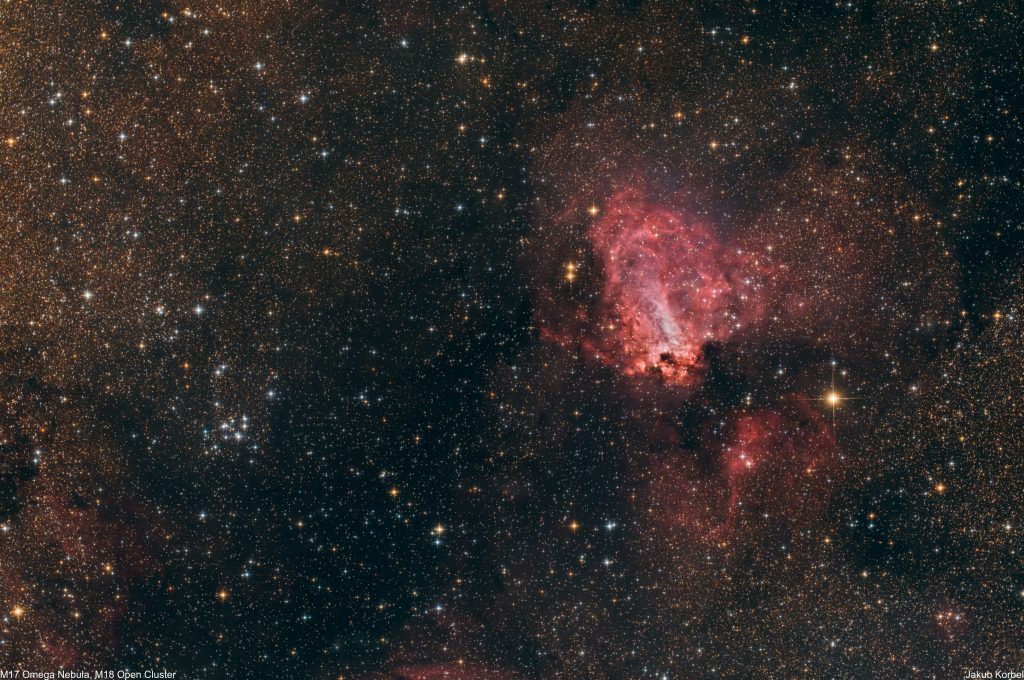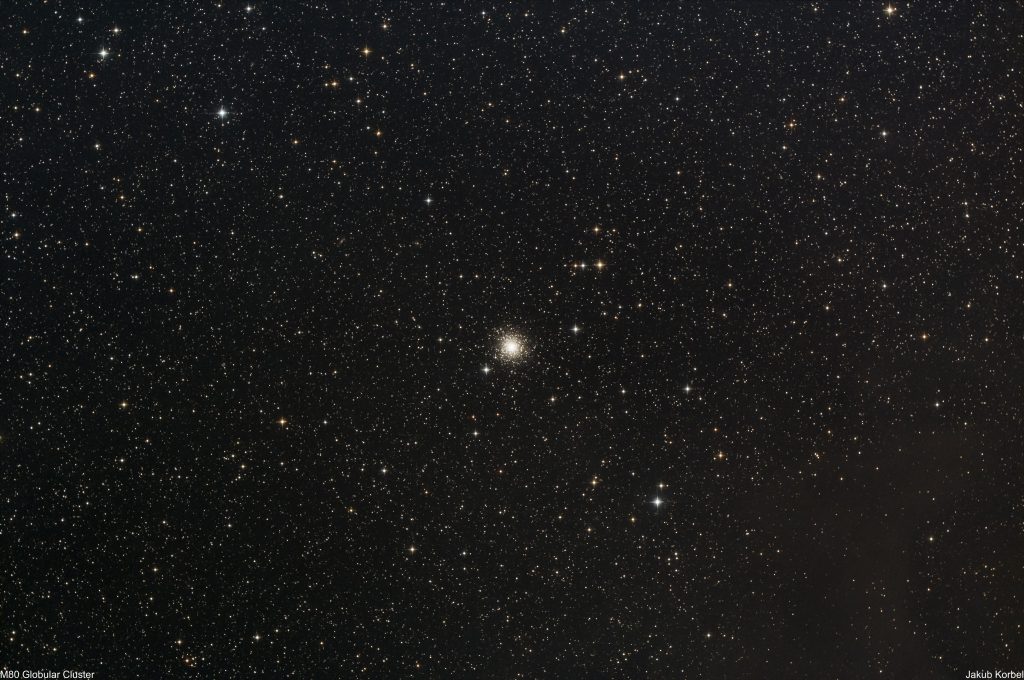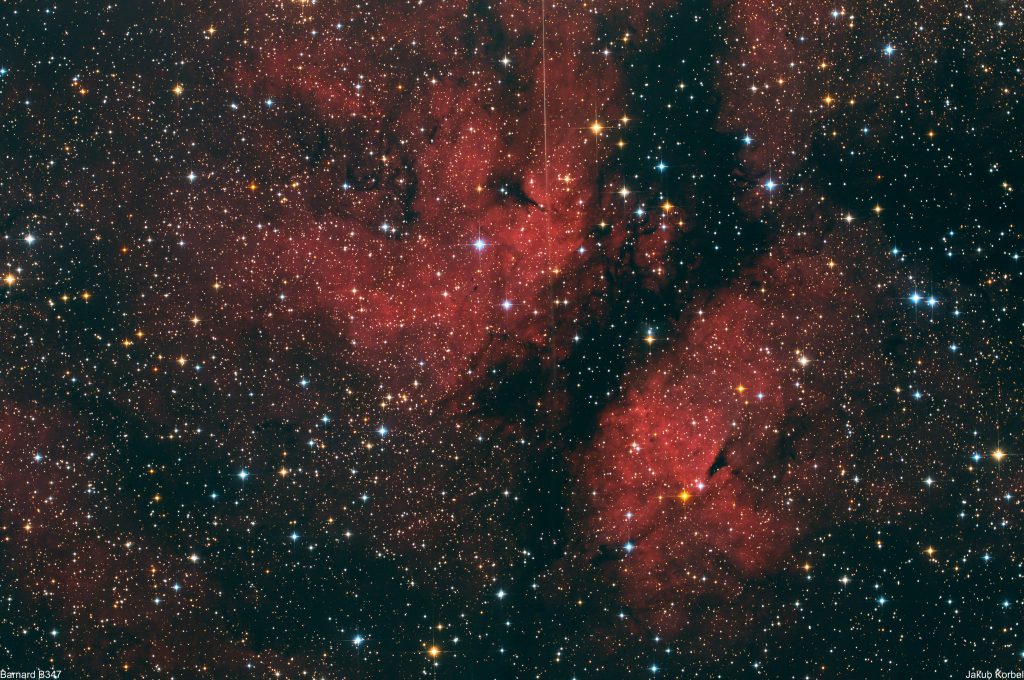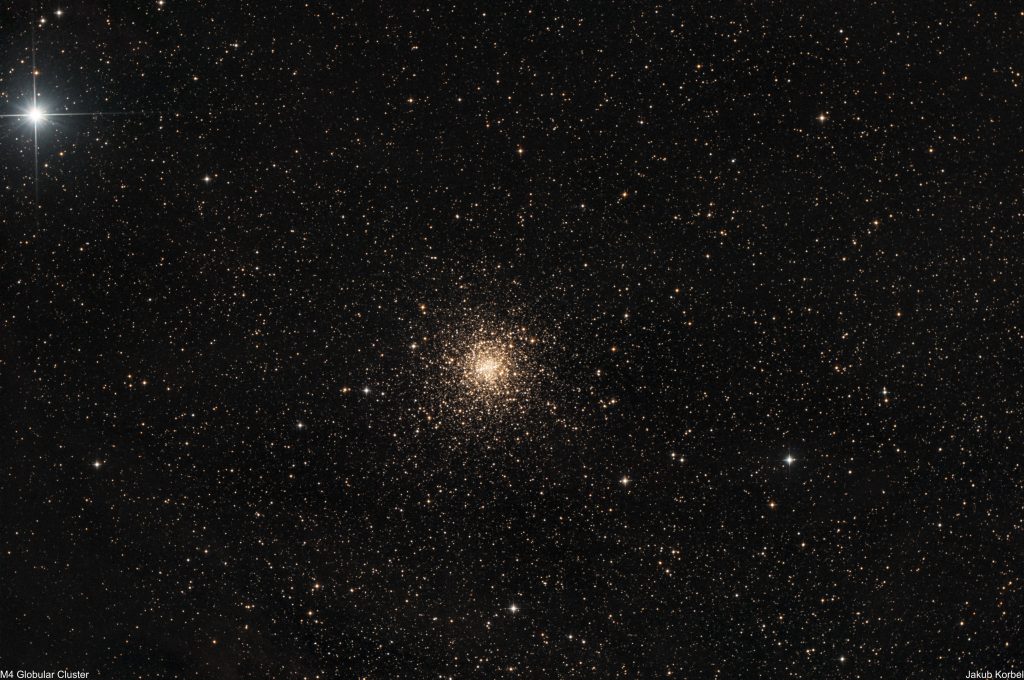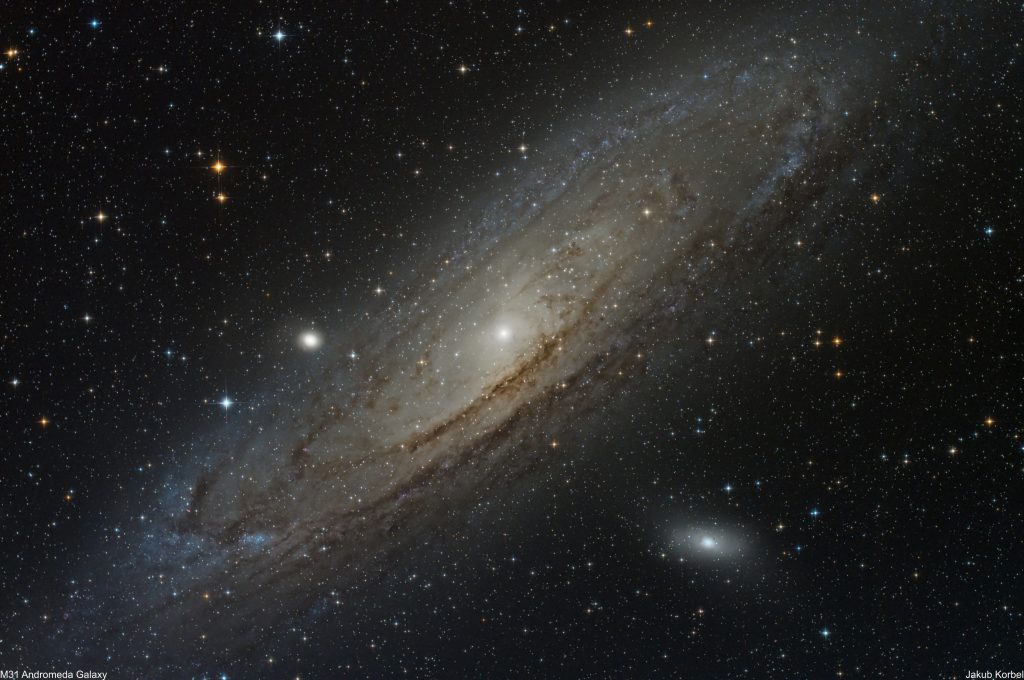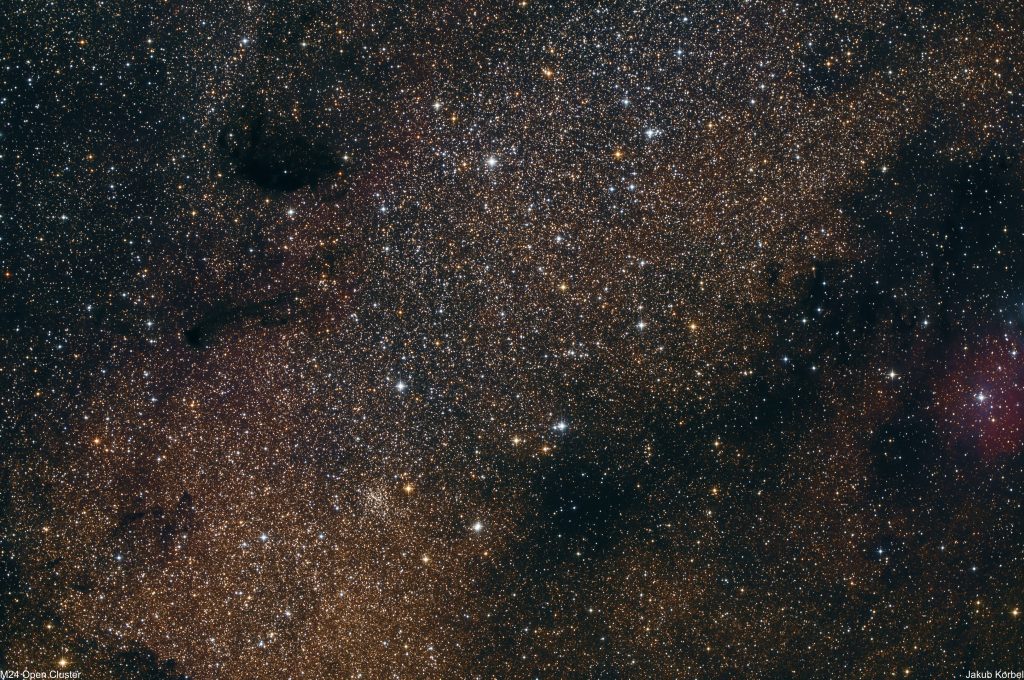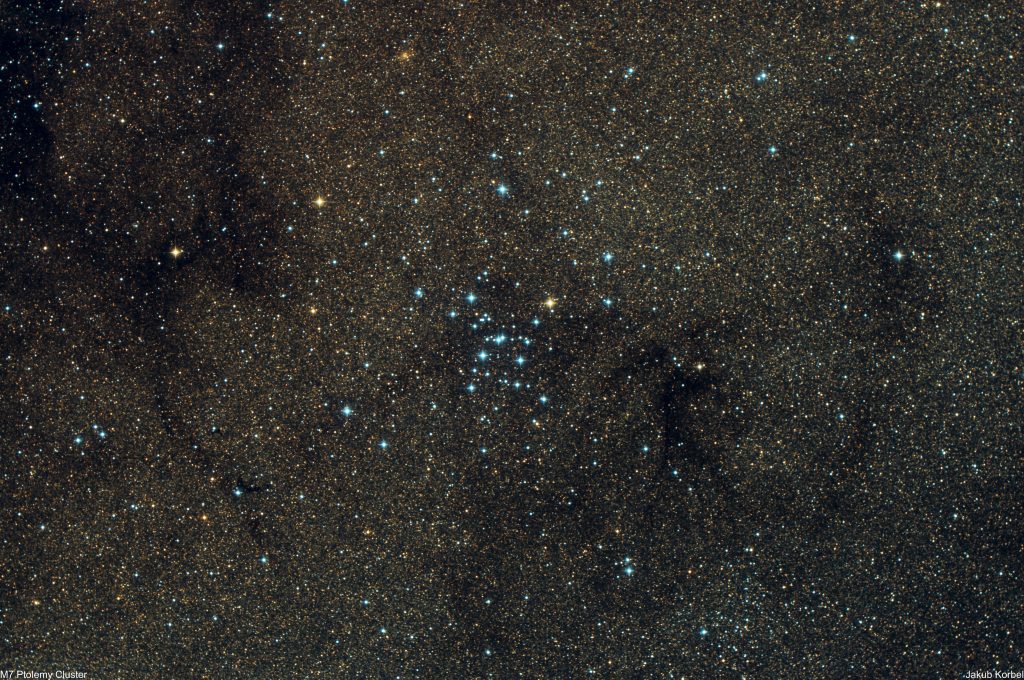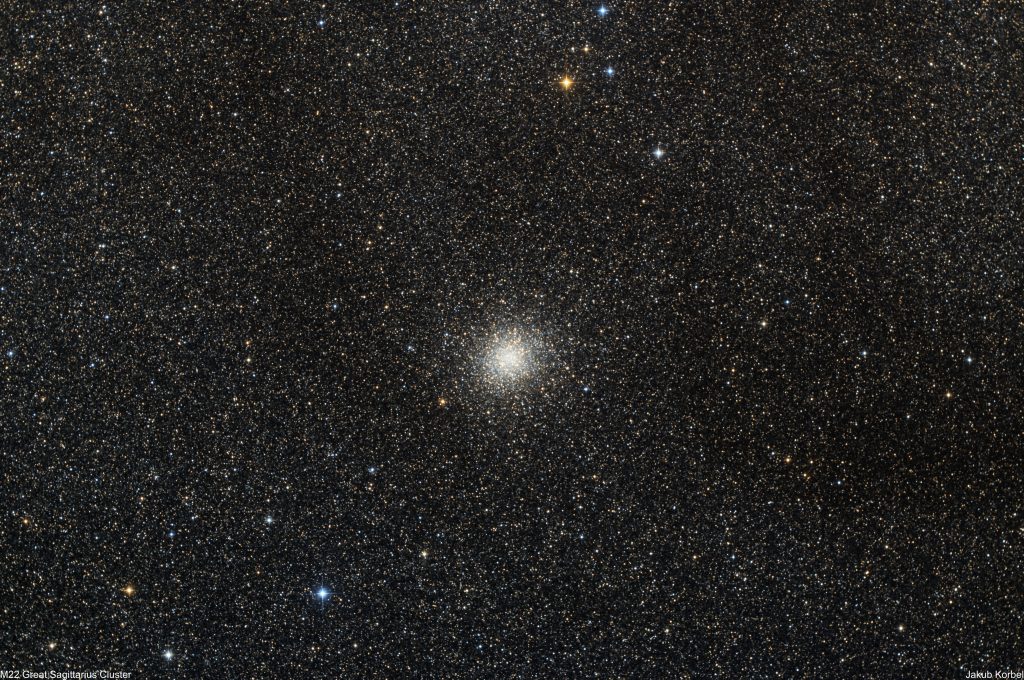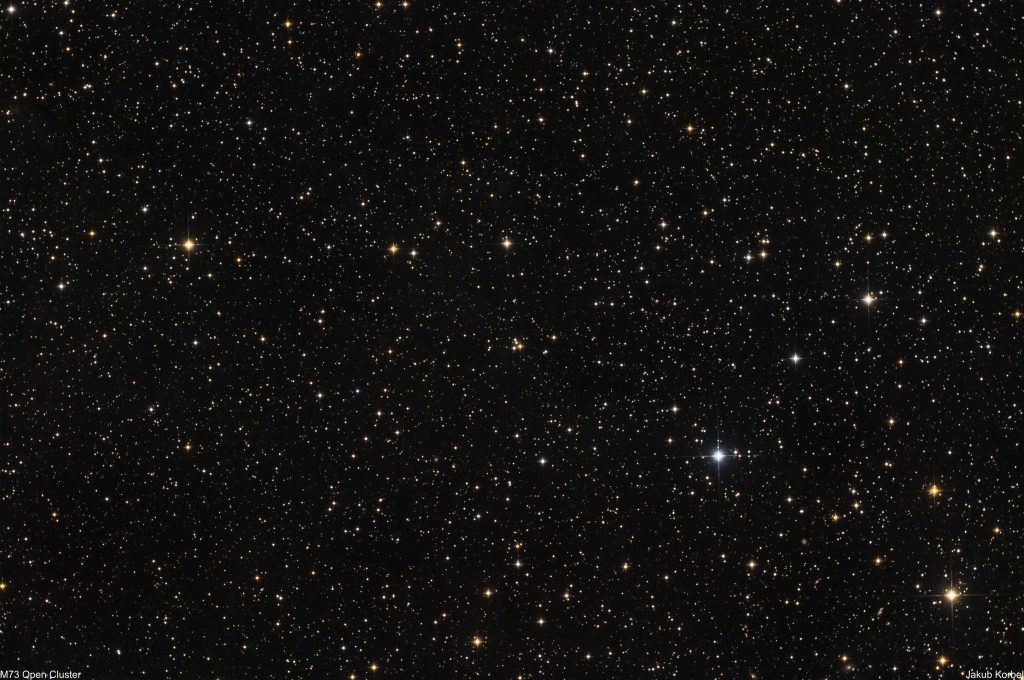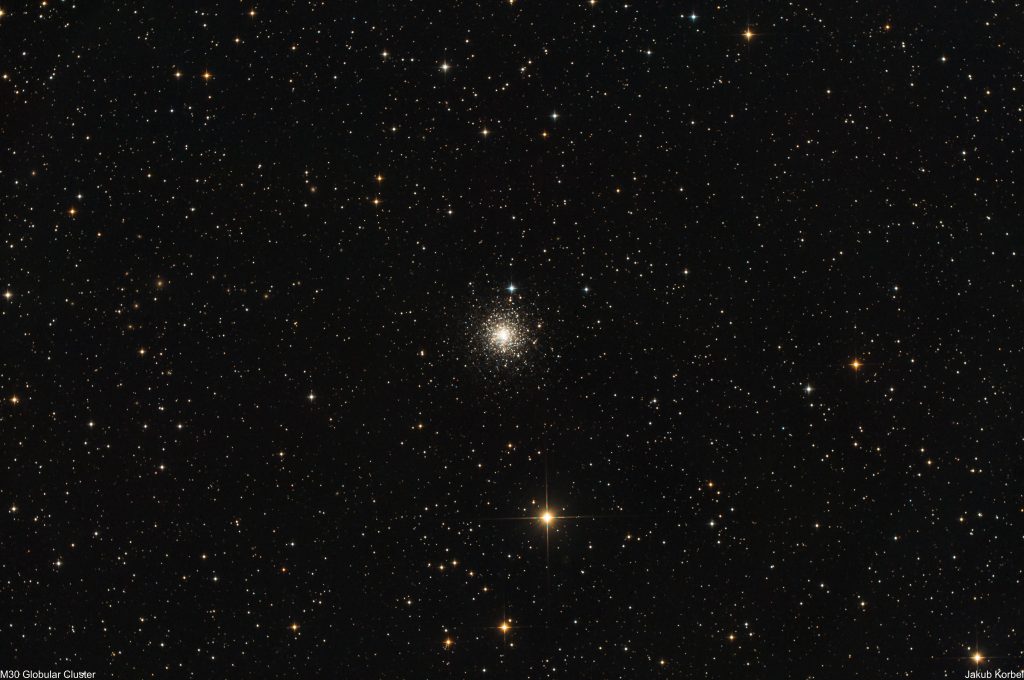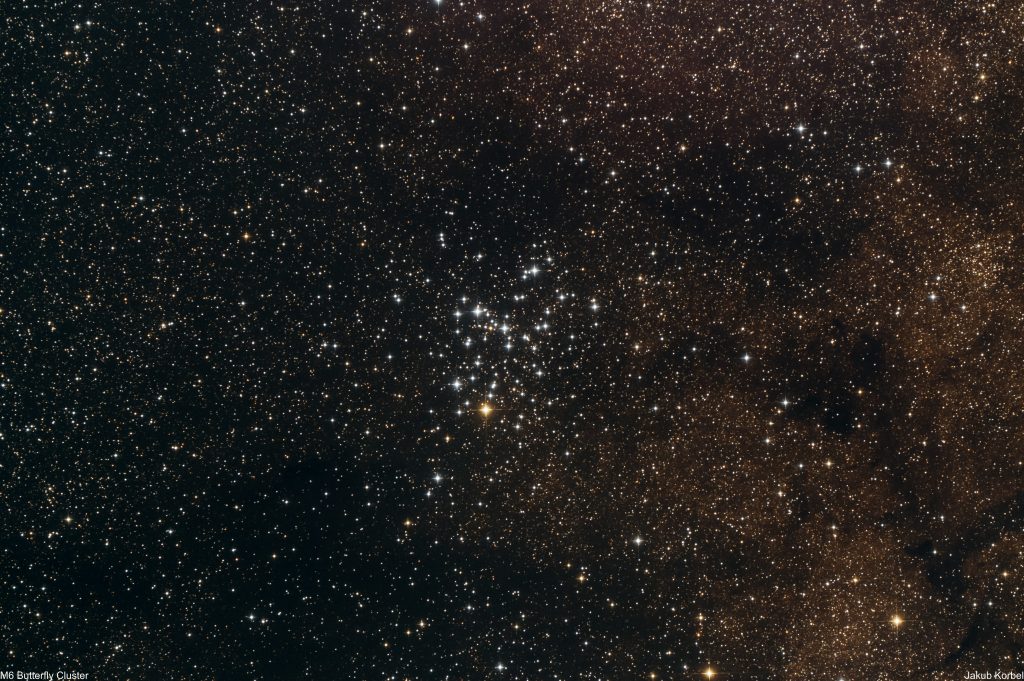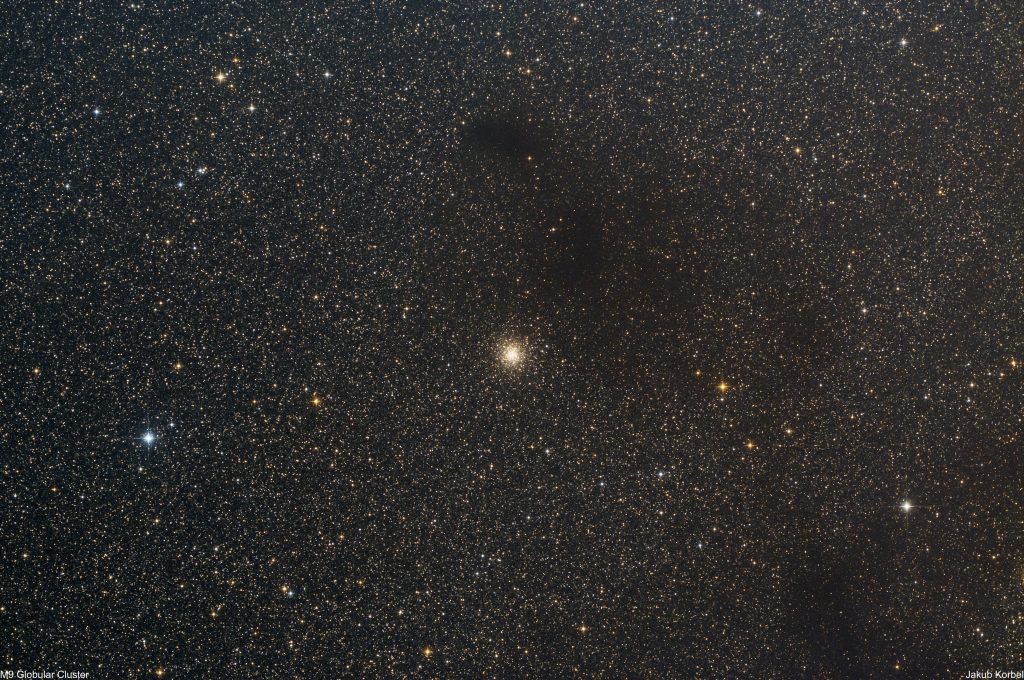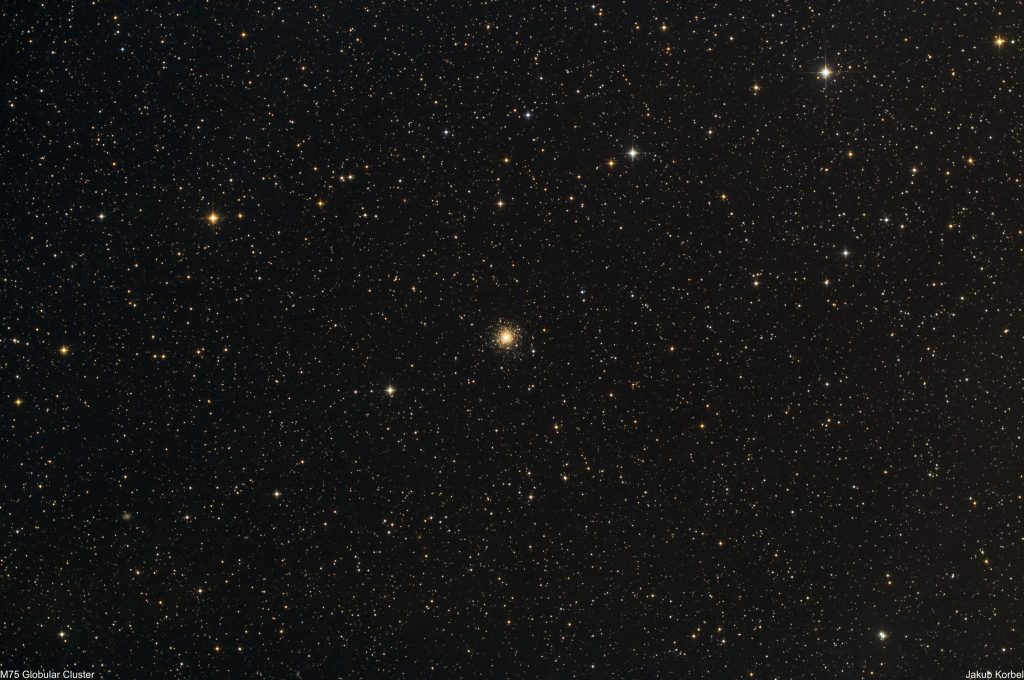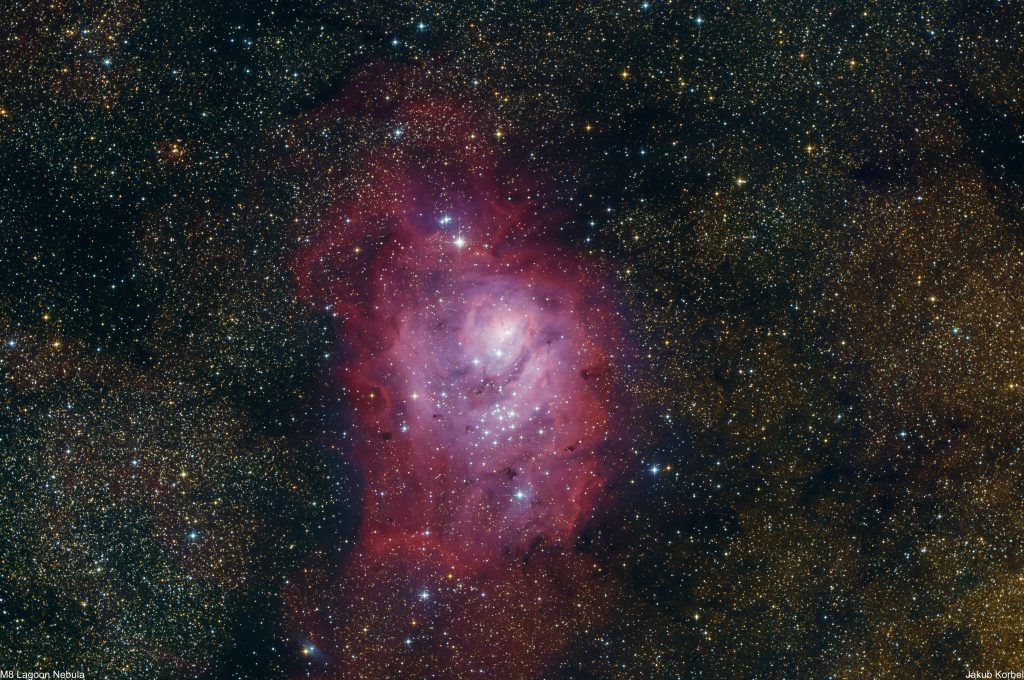Messier107 is a globular cluster located in the constellation Ophiuchus. The cluster is very close to galactic disk of the Milky Way and 20’600 light-years far from Earth.
Technical details:
| Telescope | Newton 150/600 mm |
| Aperture | 150 mm |
| Focal length | 660 mm |
| Mount | iOptron CEM25P |
| Autoguiding | QHYCCD miniGuideScope 130 mm f/4.3, ZWO 174 MM |
| Camera | ZWO 071 Pro @-10C |
| Corrector | Explore Scientific HR coma corrector |
| Filters | Astronomik L-1 - UV IR Block Filter |
| Exposure | 18x180s, Gain 134, bin 1x1, |
| Date | 2018-09-07 |

